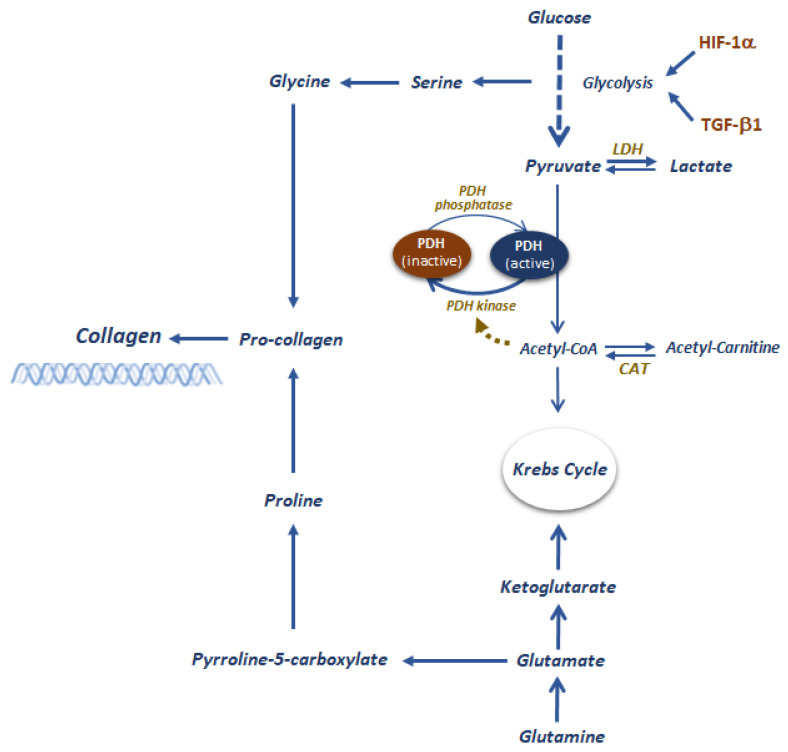Figure 1.
Graphical representation of metabolic control of fibrosis. Several metabolic processes such as glycolysis, glutaminolysis, and fatty acid oxidation contribute to the deposition and other ECM components. High glucose levels activate glycolysis directly by increasing HIF-1a expression, which in turn amplifies the production of TGF-b1. The latter would not only further sustain high glycolytic rates but also fibrogenesis. The increased production of lactate sustains macrophages polarization toward an inflammatory phenotype, which worsens the fibrosis. In addition, the increased glycolytic rate makes glycolytic intermediates available in larger quantities, contributing to the synthesis of amino acid substrates for collagen synthesis. Moreover, glutamine has a role in collagen synthesis, but it can also contribute to ATP production through oxidative phosphorylation. A key metabolic switch in maintaining a chronically activated fibrogenic state is the pyruvate dehydrogenase complex (PDH).

